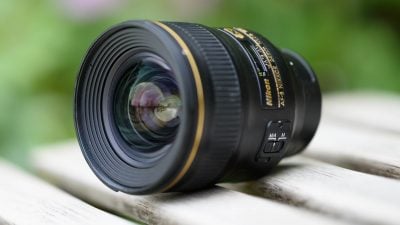Nikon 24mm f1.4G review
-
-
Written by Thomas
In depth
The AF-S Nikkor 24mm f1.4G ED is a wide-angle bright prime lens designed for Nikon DSLRs. It dates from January 2010 and is the widest member of Nikon’s line-up of professional f1.4 primes comprising 24mm, 35mm, 50mm, and 85mm focal lengths. Large aperture 24mm lenses are attractive additions to interchangeable lens bodies of DX or FX format: on the former cropped bodies they are equivalent in angle-of-view and depth-of-field to a 35mm f2.0 lens which is quite attractive for reportage / street photography as it’s fast and gives some background isolation. On a full-frame body a 24/1.4 lens would be the widest f1.4 lens from Nikon that you can get, giving a clearly broader angle-of-view than 35mm or 28mm lenses can. The wide coverage lets you capture more of architecture or landscapes while the bright aperture lets you shoot longer under diminishing light and better isolates closer subjects from the background. Only Sigma offers a wider full-frame lens with an f1.4 focal ratio: the 20mm f1.4 DG HSM “ART” (see my Sigma 20mm f1.4 Art review).
Sigma also offers an f1.4 ART lens in the 24mm focal length, so the big question is how does it compare against the Nikon 24mm f1.4? To find out I compared the Nikkor AF-S 24mm f1.4G on the demanding D810 body not only against the Sigma 24mm f1.4 Art, but also with Nikon’s more affordable 24mm f1.8G and Samyang’s manual focus 24mm f1.4. So if you’re shopping for a bright wide-angle lens, this review will give you some answers!
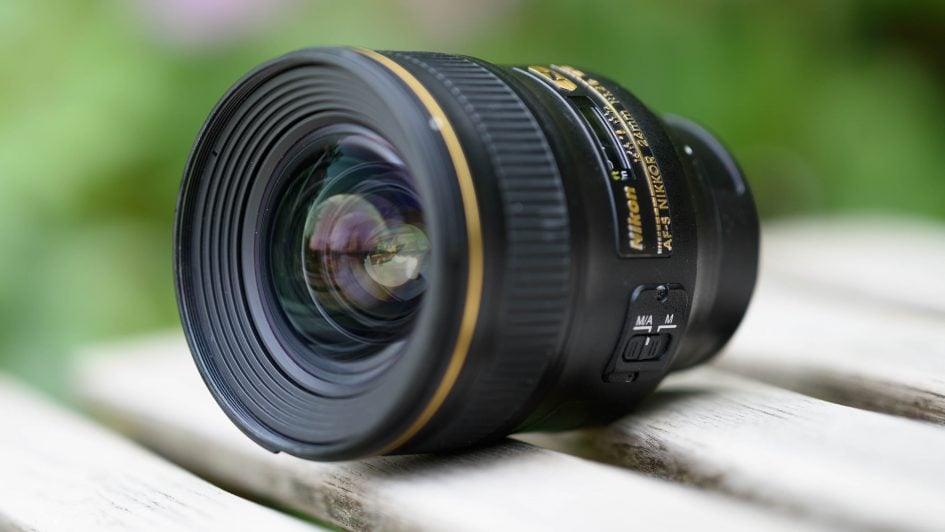
Facts from the catalog
As usual I’ll have a look at the technical data first. I’ve rated the features with a [+] (or [++]), when it’s better than average or even state of the art, a [0] if it’s standard or just average, and [-] if there’s a disadvantage. I’ll compare it with the Sigma Art AF 24mm 1.4 DG HSM (the “Sigma 24/1.4” for short).
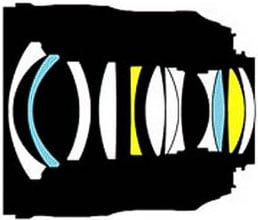
Size (diam. x length): 83 x 89mm (3.3 x 3.5in). This is pretty decent although it’s funny to see a wide-angle lens being so long. The Sigma 24/1.4 is only a little larger at 85 x 90mm. [0]
Weight: 620g (22oz.). The Sigma 24/1.4 comes in at 665g. [0]
Optics: 12 elements in 10 groups. Nano-coating should reduce flare and ghosting and we’ll see how well that works in my tests. The cross-section shows two ED elements plus two aspherical elements. The Sigma 24/1.4 has 15 elements in 11 groups. [+]
Closest focus distance/max. magnification: 0.25m (0.82ft) / 1:5.1 with manual focus. This gives you a working distance of around 12 cm when you don’t use the lens hood. The Sigma 24/1.4 reaches 1:5.3 at 0.25m.[0]
Filter-thread: All 24/1.4 lenses use 77mm filters. That’s the size what most pro-lenses use. [+]
Image Stabilization: no 24mm prime lens offers optical stabilization except for Canon’s EF 24mm f2.8 IS USM. And with the small magnification at a focal length of 24mm it is no deal breaker. But it has to be said, shooting dim interiors or landscapes in fading light hand-held can prove quite a challenge without stabilization. [0]
Auto Focus: AF-S with SWM (silent wave motor), so it does work on D3x00/5×00-bodies. Manual-focus override is by simply turning the focus ring. Same with the Sigma. The Samyang is manual focus only. [+]
Covers full frame / FX or smaller = very good. Same with the competition. [+]
Price: The Nikkor costs around 1700 EUR (incl. 19% VAT) which makes it the most expensive f1.4 prime in Nikon’s line-up. The Sigma 24/1.4 can be had for 750 EUR. [-]
Comes with a simple soft pouch which is the same as with Nikon’s other f1.4 primes but seems odd on a lens of this price. The lens hood is included, reversible for transport, and the lens-caps are standard Nikon’s. The Sigma comes with a nicer well-padded case. [0]
Distance information is relayed to the camera, so the Nikon body can do all the advanced exposure-related stuff with this lens. Same with the competition. [+]
Aperture ring: No aperture ring, which is standard. Only the manual focus Samyang offers one. [0]
Sealing: A rubber grommet at the lens-mount. [+]
The score in the “features-department” is 1[-]/6[0]/6[+]. In direct comparison to the Sigma 24/1.4 Art the Nikon 24/1.4G has really only one disadvantage: It’s 1000 EUR more expensive.
Three alternative 24mm f1.4 lenses
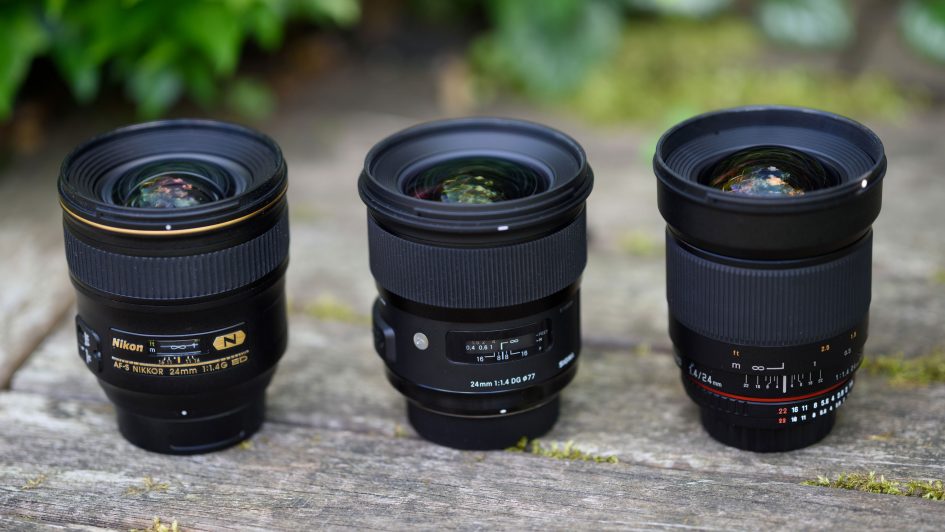
Above left: Nikon AF-S 24/1.4G ED, middle: Sigma Art AF 24/1.4 DG HSM, right: Samyang 24/1.4 ED AS UMC
Alternatives:
– The prime alternative is Sigma’s 24/1.4 Art that sells for around 750 EUR and performed very convincingly (see my Sigma 24/1.4 Art review) earning a Highly Recommended.
– If you don’t need AF there’s a manual focus 24mm f1.4 ED AS UMC from Samyang which is the cheapest way to get a 24mm f1.4 lens: It is priced around 550 EUR. See my Samyang 24/1.4 review-in-progress.
– If you can live with a maximum aperture of f1.8 or even f2.0 there are more alternatives: From Nikon there’s the new AF-S 24/1.8G lens (850 EUR) which earned a Recommended in my Nikon 24mm f1.8G ED review. And from Sigma there are two zooms: the 18-35mm f1.8 DC Art (680 EUR), which is a very interesting zoom but covers only DX sensors or the 24-35mm f2.0 DG Art (970 EUR, see my Sigma 24-35/2.0 Art review-in-progress).
Focus and build quality
Focus accuracy and repeatability is critical to consistently produce sharp shots. Repeatability (the accuracy of focus on the same subject after repeated focus-acquisition) of this lens is very good (measured 99.1% in FoCal) with no real outliers over a series of 40 shots. And the lens focuses relatively slow taking around 0.8 sec from infinity to 30 cm.
The focus ring has some slack/play between its movement and the focus-action which is the first time that I observe this on a gold-ringed f1.4 Nikon lens. It has a throw of around 95 degrees, which is OK for accurate focus wide open. The focus ring is 16mm wide and easy to grip and move. AF-operation is barely audible from the outside, and if you record video with the built-in microphone focus-movement starts and stops almost without the typical “clack” that other lenses have but the AF-drive itself produces a slight buzzing noise.
The lens is made in Japan and the general the impression of build quality is that of a pro-level lens: A high quality metal/plastic construction with nine rounded aperture blades, weather sealing, and a tight fitting lens hood. Only the play in the focus ring is detrimental to the good impression.
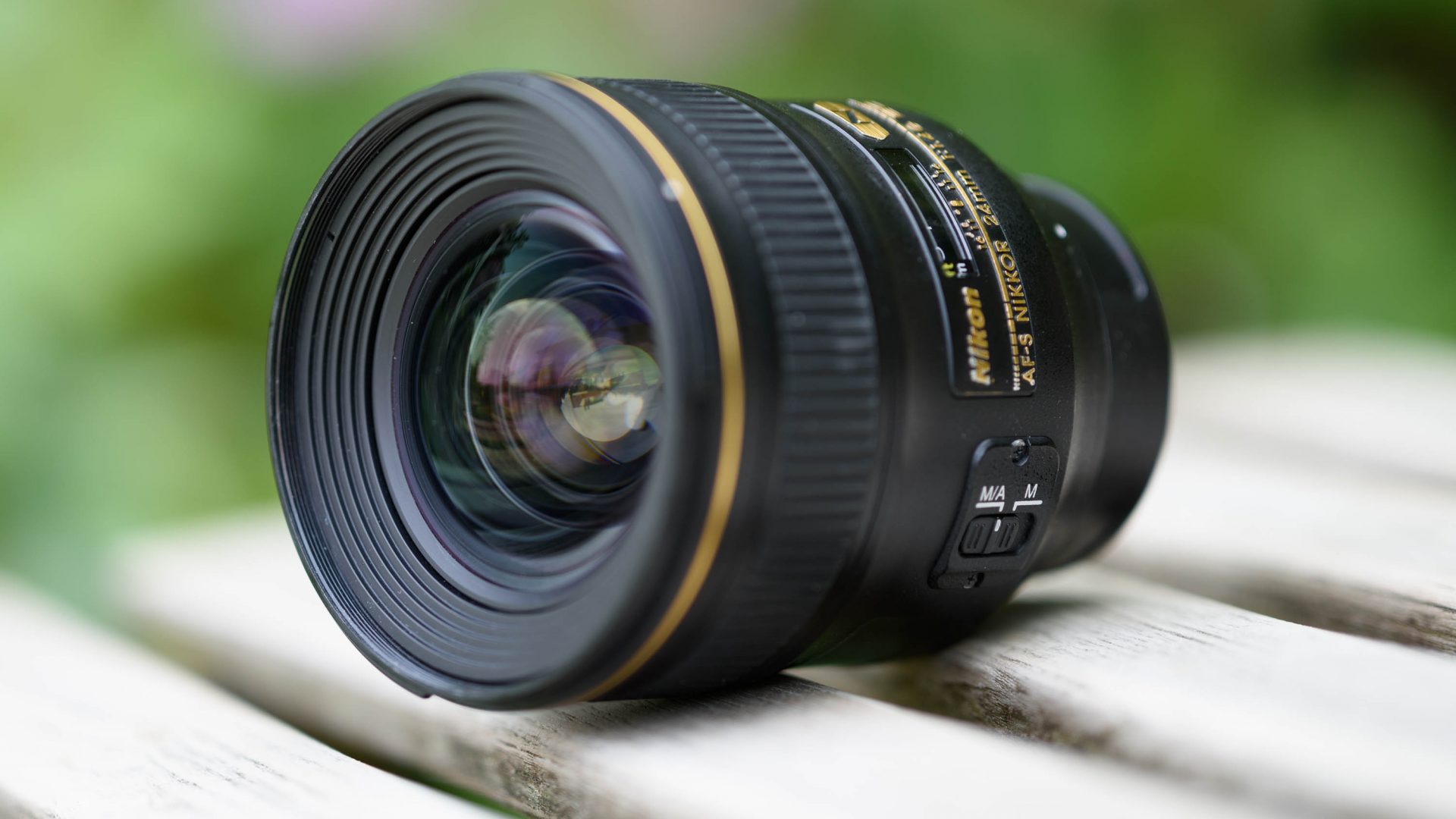
 The Nikon AF-S 24/1.4G ED is a worthy member of Nikon's professional line of f1.4 primes. Wide-open it exhibits a soft degradation of sharpness towards the corners of a full-frame sensor without the pronounced dip at the DX-corners that some more modern designs display. And it needs only little stopping down to produce very good results across a 36MP sensor. But since 2015 there's tough competition from the Sigma 24/1.4 Art that delivers less coma, less loCA, less distortions, and sharper image center at a price 1000 EUR lower. And with a build that looks (at least from the outside) tougher than Nikon's - except for the missing weather sealing. But the Nikon delivers an impressive performance nonetheless and probably has an advantage regarding serviceability over the long run which could be a decisive factor for professionals. This, along with the uniform performance earns the "old" Nikon lens a Highly Recommended rating, although if you don't need weather-sealing, the Sigma 24mm f1.4 ART delivers excellent results and represents great value.
The Nikon AF-S 24/1.4G ED is a worthy member of Nikon's professional line of f1.4 primes. Wide-open it exhibits a soft degradation of sharpness towards the corners of a full-frame sensor without the pronounced dip at the DX-corners that some more modern designs display. And it needs only little stopping down to produce very good results across a 36MP sensor. But since 2015 there's tough competition from the Sigma 24/1.4 Art that delivers less coma, less loCA, less distortions, and sharper image center at a price 1000 EUR lower. And with a build that looks (at least from the outside) tougher than Nikon's - except for the missing weather sealing. But the Nikon delivers an impressive performance nonetheless and probably has an advantage regarding serviceability over the long run which could be a decisive factor for professionals. This, along with the uniform performance earns the "old" Nikon lens a Highly Recommended rating, although if you don't need weather-sealing, the Sigma 24mm f1.4 ART delivers excellent results and represents great value.



